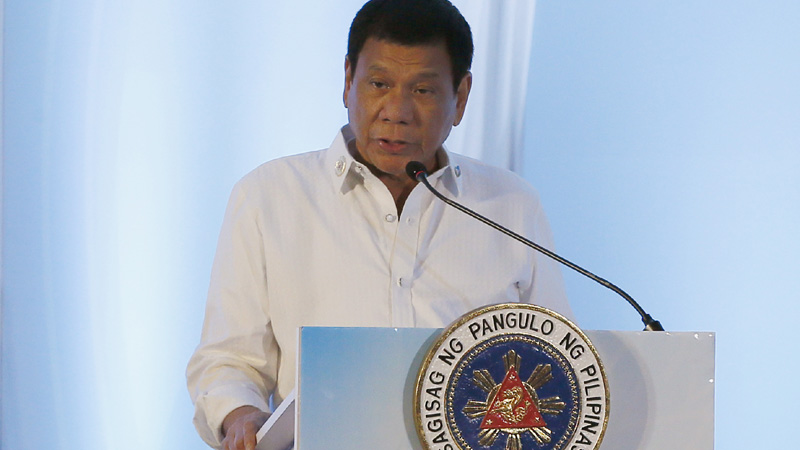On July 12, a tribunal at the Permanent Court of Arbitration in The Hague issued its long-awaited ruling on Manila’s case against Beijing’s claims in the South China Sea. How many countries recognize the decision as legally binding on both parties and call for it to be respected will determine its ultimate value, as international pressure is the court’s only enforcement mechanism. In recent months, AMTI scoured publicly available, official statements in an effort to determine the real positions taken by countries toward the ruling. It is enlightening to compare the level of global support expressed since the July 12 ruling to the positions of countries in the months leading up to the verdict. A full list of official statements, both pre- and post-ruling, is available at the bottom of this feature.

Shifting Sands
In the first half of 2016, Beijing recognized that a ruling on the merits of the case was imminent and launched a diplomatic effort to convince governments around the world to voice support for its position that the arbitral tribunal was illegitimate and lacked jurisdiction in the case. On the eve of the ruling, China’s Ministry of Foreign Affairs claimed that more than 60 countries supported this position, but had not provided a comprehensive list or, in most cases, evidence for this claim. Eventually, AMTI identified 31 countries that had publicly voiced support for Beijing’s position, along with 4 that had denied any such support and 26 that had remained publicly silent despite China’s claim of support or had issued statements that were considerably vaguer than indicated by China. In contrast, 40 countries had said that the arbitral award would be legally binding and had called on both China and the Philippines to respect it.
Before the Ruling…

In the month since the ruling was issued, AMTI has identified 7 countries that have publicly called for the arbitral award to be respected, 33 that have issued generally positive statements noting the verdict but have stopped short of calling for the parties to abide by it, 9 that have made overly vague or neutral statements without addressing the ruling, and 6 that have publicly rejected it. A few differences are clear between the level of support pre- and post-ruling
After the Ruling…

The 28 members of the European Union, along with several non-members, voiced support for binding arbitration under the United Nations Convention on the Law of the Sea (UNCLOS) in a March joint statement about the South China Sea, but then failed to endorse the final ruling as legally binding in an otherwise positive statement following the award. These included Germany, France, Italy, and the United Kingdom, all of which signed onto a statement at the May G-7 meeting in Japan that had called on China to abide by the forthcoming ruling. One of the non-EU members that voluntarily signed onto the March statement—Montenegro—even reversed position following the July 12 award and sided with China in rejecting the ruling.
There is a strong correlation between the level of support shown for the South China Sea arbitration, and a country’s level of corruption and strength of governance/rule of law …Several Asian nations that had remained silent before the ruling—India, Malaysia, Myanmar, and South Korea—have since issued positive statements regarding the award, without explicitly calling on China to submit to the court’s judgment. Taiwan, meanwhile, has rejected the ruling based on the court’s finding that Itu Aba, Taipei’s only occupied feature in the Spratly Islands, is legally a rock rather than an island. But most of the support that China previously claimed has not been in evidence since the ruling. The majority of China’s backing before the judgment, including from the 22 members of the League of Arab States, took the form of joint statements which included mention of the right of countries to exempt certain types of disputes from compulsory settlement as provided for by article 298 of UNCLOS (which China claims invalidated the arbitral proceedings because they actually touched upon boundary delimitation, from which it has exempted itself). That support for a general principle has not translated into public opposition to the recent judgment.
There is a strong correlation between the level of support shown for the South China Sea arbitration, and a country’s level of corruption and strength of governance/rule of law, as measured by Transparency International’s Corruption Perceptions Index (CPI) and Freedom House’s Freedom in the World scores. There are exceptions, mostly involving states directly involved in the South China Sea or similar disputes, but generally countries with greater respect for rule of law at home and more insulated from Chinese economic coercion have been more willing to speak in defense of the arbitral tribunal and international law more broadly.
Countries that have voiced support for the ruling have an average CPI of 67 and Freedom House score of 81, while those positively acknowledging the award without calling for compliance have averages of 62 and 86. By comparison, those that have publicly opposed the ruling have an average CPI of 37 and a Freedom House score of 50.
AMTI defined support for China’s position ahead of the ruling as an explicit public statement that 1) the arbitral tribunal lacked jurisdiction or legitimacy; 2) the right of states to choose their own method of dispute resolution should be respected (and therefore compulsory dispute mechanisms such as the tribunal are invalid); or 3) the right of states to exempt certain types of disputes from compulsory settlement as provided for by article 298 of UNCLOS should be respected.
https://amti.csis.org/sides-in-south-china-sea/





